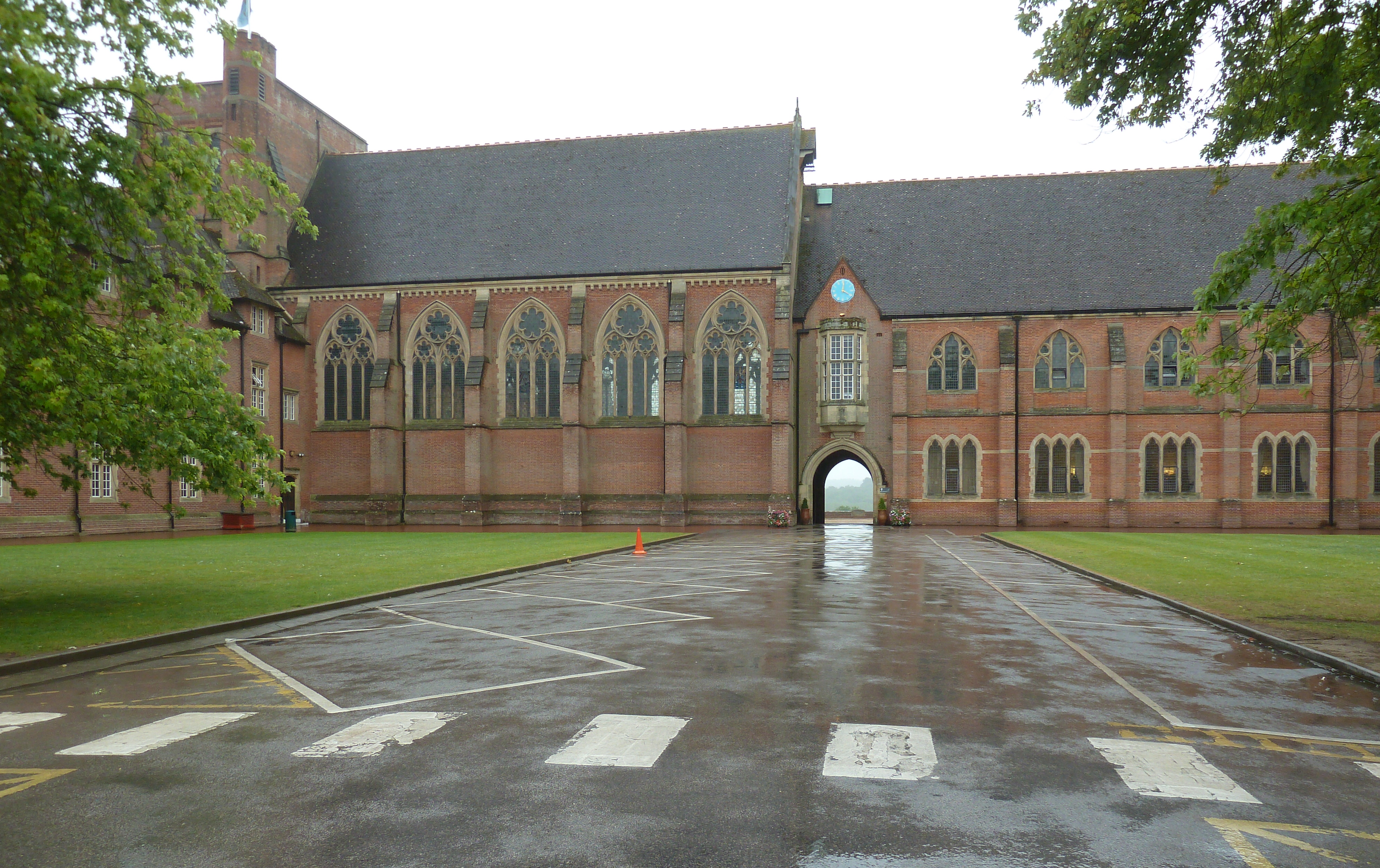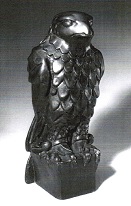|
Harry Stephen Keeler
Harry Stephen Keeler (November 3, 1890 – January 22, 1967) was a prolific but little-known American fiction writer, who developed a cult following for his eccentric mysteries. He also wrote science fiction. Biography Born in Chicago in 1890, Keeler spent his childhood exclusively in this city, which was so beloved by the author that a large number of his works took place in and around it. In many of his novels, Keeler refers to Chicago as "the London of the west". The expression is explained in the opening of ''Thieves' Nights'' (1929): Here ... were seemingly the same hawkers ... selling the same goods ... here too was the confusion, the babble of tongues of many lands, the restless, shoving throng containing faces and features of a thousand racial castes, and last but not least, here on Halsted and Maxwell streets, Chicago, were the same dirt, flying bits of torn paper, and confusion that graced the junction of Middlesex and Whitechapel High streets far across the globe ... [...More Info...] [...Related Items...] OR: [Wikipedia] [Google] [Baidu] |
Rosehill Cemetery
Rosehill Cemetery (founded 1859) is an American garden cemetery on the North Side of Chicago, Illinois, and at , is the largest cemetery in the City of Chicago. According to legend, the name "Rosehill" resulted from a City Clerk's error – the area was previously called "Roe's Hill", named for nearby farmer Hiram Roe. He refused to sell his land to the city until it was promised that the cemetery be named in his honor. It is located in the north east section of the Lincoln Square community area. Rosehill's Joliet-limestone entrance gate (added in 1864) was designed by William W. Boyington, the architect of the Chicago Water Tower and the Old University of Chicago, who is buried in Rosehill. The Rosehill Cemetery Administration Building and Entry Gate was listed on the U.S. National Register of Historic Places in 1975. Like its sister cemetery Graceland, Rosehill is the burial place of many well-known Chicagoans. The cemetery contains many monuments that are notable for thei ... [...More Info...] [...Related Items...] OR: [Wikipedia] [Google] [Baidu] |
Jack Woodford
Jack Woodford (1894–1971) was an American novelist and non-fiction writer, author of successful pulp novels and non-fiction of the 1930s and 1940s. He wrote unique books on writing and getting published. Most famously, Woodford authored '' Trial and Error'' which caused something of a scandal at the time of publication because of its no-holds-barred insights into the publishing industry. Born Josiah Pitts Woolfolk, he also wrote under the name Jack Woolfolk. The pen name "Jack Woodford" was derived from the first name of a writer he admired ( Jack Lait, a writer for Hearst Publications) and the county where his father was born ( Woodford County, Kentucky). Other pen names include Gordon Sayre, Sappho Henderson Britt, and Howard Hogue Kennedy. Life Woodford grew up in Chicago when the dominant form of transportation was horse-drawn carriage. He was raised in well-to-do circumstances by his grandmother Annette (of Welsh stock) whom he called "Nettie". Nettie was a prac ... [...More Info...] [...Related Items...] OR: [Wikipedia] [Google] [Baidu] |
Ken Keeler
Ken Keeler is an American television producer and writer. He has written for numerous television series, most notably '' The Simpsons'' and ''Futurama''. According to an interview with David X. Cohen, he proved a theorem that appears in the ''Futurama'' episode "The Prisoner of Benda". Education and early career Keeler studied applied mathematics at Harvard University, graduating ''summa cum laude'' in 1983. He then gained a master's degree from Stanford in electrical engineering before returning to Harvard. He earned a PhD in applied mathematics from Harvard in 1990. His doctoral thesis was "Map Representations and Optimal Encoding for Image Segmentation". After earning his doctorate, Keeler joined the Performance Analysis Department at AT&T Bell Laboratories. Career Keeler soon left Bell Labs to write for David Letterman and subsequently for various sitcoms, including several episodes of '' Wings'', '' The Simpsons'', ''Futurama'', and '' The Critic'', as well as the short- ... [...More Info...] [...Related Items...] OR: [Wikipedia] [Google] [Baidu] |
Futurama
''Futurama'' is an American animated science fiction animated sitcom, sitcom created by Matt Groening for the Fox Broadcasting Company. The series follows the adventures of the professional slacker Philip J. Fry, who is cryonics, cryogenically preserved for 1000 years and revived on December 31, 2999. Fry finds work at an interplanetary delivery company, working alongside the one-eyed Leela (Futurama), Leela and robot Bender (Futurama), Bender. The series was envisioned by Groening in the mid-1990s while working on ''The Simpsons''; he brought David X. Cohen aboard to develop storylines and characters to pitch the show to Fox. Following its initial cancelation by Fox, ''Futurama'' began airing reruns on Cartoon Network's Adult Swim programming block, which lasted from 2003 to 2007. It was revived in 2007 as four direct-to-video films, the last of which was released in early 2009. Comedy Central entered into an agreement with 20th Century Fox Television to syndicate the existing ... [...More Info...] [...Related Items...] OR: [Wikipedia] [Google] [Baidu] |
Neil Gaiman
Neil Richard MacKinnon GaimanBorn as Neil Richard Gaiman, with "MacKinnon" added on the occasion of his marriage to Amanda Palmer. ; ( Neil Richard Gaiman; born 10 November 1960) is an English author of short fiction, novels, comic books, graphic novels, nonfiction, audio theatre, and films. His works include the comic book series '' The Sandman'' and novels ''Stardust'', '' American Gods'', '' Coraline'', and '' The Graveyard Book''. He has won numerous awards, including the Hugo, Nebula, and Bram Stoker awards, as well as the Newbery and Carnegie medals. He is the first author to win both the Newbery and the Carnegie medals for the same work, ''The Graveyard Book'' (2008). In 2013, '' The Ocean at the End of the Lane'' was voted Book of the Year in the British National Book Awards. It was later adapted into a critically acclaimed stage play at the Royal National Theatre in London, England that ''The Independent'' called "...theatre at its best". Early life Gaiman's fa ... [...More Info...] [...Related Items...] OR: [Wikipedia] [Google] [Baidu] |
Richard Polt
Richard F. H. Polt is a professor of philosophy at Xavier University in Cincinnati, Ohio. He has written about and translated works by Martin Heidegger. Polt is a typewriter enthusiast active on the Typosphere and a former editor of the quarterly ETCetera publication about manual typewriters. He is the author of three books, and he also contributed to the 2016 documentary '' California Typewriter'' that features Tom Hanks Thomas Jeffrey Hanks (born July 9, 1956) is an American actor and filmmaker. Known for both his comedic and dramatic roles, he is one of the most popular and recognizable film stars worldwide, and is regarded as an American cultural icon. Ha .... Works As author * ''Time and Trauma: Thinking through Heidegger in the Thirties'' (London: Rowman ¶ Littlefield International Ltd., 2019) * ''The Typewriter Revolution: A Typist's Companion for the 21st Century'' (Woodstock, VT: The Countryman Press, 2015) * ''The Emergency of Being: On Heidegger's 'Contributio ... [...More Info...] [...Related Items...] OR: [Wikipedia] [Google] [Baidu] |
John Russell Fearn
John Russell Fearn (1908–1960) was a British writer, one of the first to appear in American pulp science fiction magazines. A prolific author, he published his novels also as Vargo Statten and with various pseudonyms including Thornton Ayre, Polton Cross, Geoffrey Armstrong, John Cotton, Dennis Clive, Ephriam Winiki, Astron Del Martia. Career Fearn was a prolific writer who wrote Westerns and crime fiction as well as science fiction. His writing appeared under numerous pseudonyms. He wrote series such as ''Adam Quirke'', ''Clayton Drew'', ''Golden Amazon'', and ''Herbert''. At times these drew on the pulp traditions of Edgar Rice Burroughs. His work received praise for its vividness, but criticism, being deemed "unpolished", with Arthur C. Clarke commenting in 1939 that "we must admire the magnificent, if undisciplined, fertility of his mind". Personal life Child of a cotton salesman and a secretary, Fearn worked initially for his father's firm, followed by work as a solici ... [...More Info...] [...Related Items...] OR: [Wikipedia] [Google] [Baidu] |
Necronomicon
The ', also referred to as the ''Book of the Dead'', or under a purported original Arabic title of ', is a fictional grimoire (textbook of magic) appearing in stories by the horror writer H. P. Lovecraft and his followers. It was first mentioned in Lovecraft's 1924 short story " The Hound", written in 1922, though its purported author, the "Mad Arab" Abdul Alhazred, had been quoted a year earlier in Lovecraft's "The Nameless City". Among other things, the work contains an account of the Old Ones, their history, and the means for summoning them. Other authors such as August Derleth and Clark Ashton Smith also cited the ' in their works. Lovecraft approved of other writers building on his work, believing such common allusions built up "a background of evil verisimilitude." Many readers have believed it to be a real work, with booksellers and librarians receiving many requests for it; pranksters have listed it in rare book catalogues, and a student smuggled a card for it into ... [...More Info...] [...Related Items...] OR: [Wikipedia] [Google] [Baidu] |
MacGuffin
In fiction, a MacGuffin (sometimes McGuffin) is an object, device, or event that is necessary to the plot and the motivation of the characters, but insignificant, unimportant, or irrelevant in itself. The term was originated by Angus MacPhail for film, adopted by Alfred Hitchcock, and later extended to a similar device in other fiction. The MacGuffin technique is common in films, especially thrillers. Usually, the MacGuffin is revealed in the first act, and thereafter declines in importance. It can reappear at the climax of the story but may actually be forgotten by the end of the story. Multiple MacGuffins are sometimes derisively identified as plot coupons. History and use The use of a MacGuffin as a plot device predates the name MacGuffin. The Holy Grail of Arthurian legend has been cited as an early example of a MacGuffin. The Holy Grail is the desired object that is essential to initiate and advance the plot. The final disposition of the Grail is never revealed, suggest ... [...More Info...] [...Related Items...] OR: [Wikipedia] [Google] [Baidu] |
Chicago Reader
The ''Chicago Reader'', or ''Reader'' (stylized as ЯEADER), is an American alternative weekly newspaper in Chicago, Illinois, noted for its literary style of journalism and coverage of the arts, particularly film and theater. It was founded by a group of friends from Carleton College. The ''Reader'' is recognized as a pioneer among alternative weeklies for both its creative nonfiction and its commercial scheme. Richard Karpel, then-executive director of the Association of Alternative Newsweeklies, wrote: e most significant historical event in the creation of the modern alt-weekly occurred in Chicago in 1971, when the ''Chicago Reader'' pioneered the practice of free circulation, a cornerstone of today's alternative papers. The ''Reader'' also developed a new kind of journalism, ignoring the news and focusing on everyday life and ordinary people. After being owned by same four founders since 1971, by the early 2000s profits and readership of the ''Reader'' were dropping, an ... [...More Info...] [...Related Items...] OR: [Wikipedia] [Google] [Baidu] |
_at_Rosehill_Cemetery%2C_Chicago.jpg)






